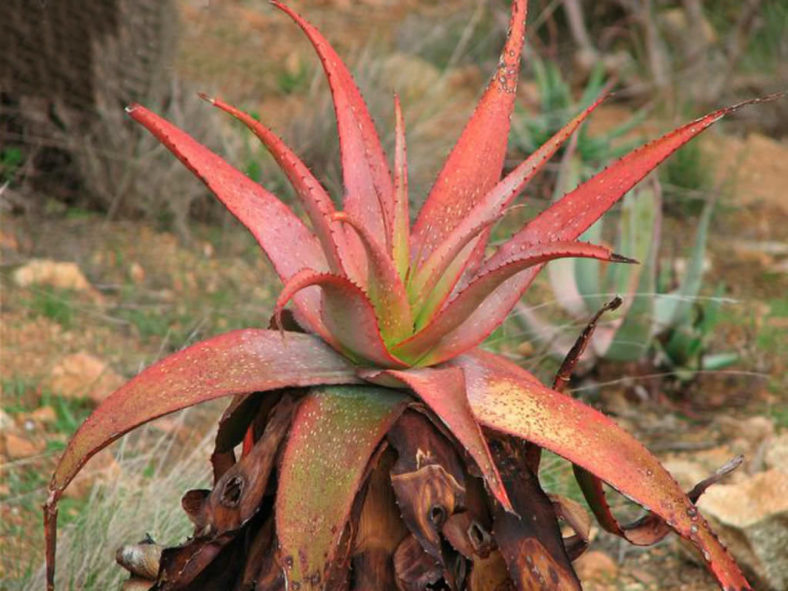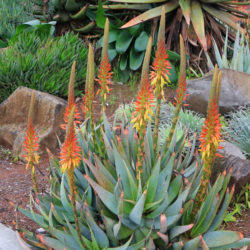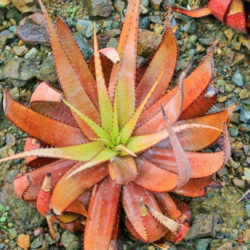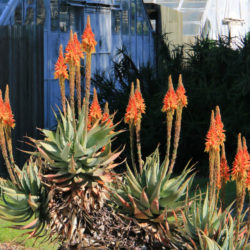Scientific Name
Aloe microstigma Salm-Dyck
Common Name(s)
Cape Speckled Aloe
Synonym(s)
Aloe microstigma subsp. microstigma
Scientific Classification
Family: Asphodelaceae
Subfamily: Asphodeloideae
Genus: Aloe
Description
Aloe microstigma is an attractive succulent that forms stemless or short-stemmed rosettes of green leaves with a reddish tinge and irregular white spots. The rosettes can grow up to 6.6 feet (2 m) tall, usually solitary or sometimes in small groups. The leaves are lance-shaped with sharp, reddish-brown teeth along the margins. They are up to 12 inches (30 cm) long and 2.4 inches (6 cm) wide.
The rosette produces flowers on simple, conical to cylindrical, up to 3 feet (90 cm) tall racemes, usually 2 or 3 simultaneously in early winter. The flowers are dull red in bud, yellowing with age, sometimes uniformly yellow or red, and up to 1.2 inches (3 cm) long. The seed capsules are up to 1.2 inches (3 cm) long and 0.35 inches (0.9 cm) in diameter.
Origin
Aloe microstigma is native to Southern Africa (Northern Cape, Western Cape, and Eastern Cape) and southern Namibia. It grows mainly in flat places, sometimes on pretty steep slopes.

Hardiness
USDA hardiness zone 9b to 11b: from 25 °F (−3.9 °C) to 50 °F (+10 °C).
How to Grow and Care
Aloes are very forgiving plants. However, as with all succulents, Aloe must never be allowed to sit in stagnant water, and the plant should be carefully monitored to watch for signs of overwatering.
Aloes are not particularly fast-growing and will only rarely need repotting. Repot plants in the spring that are tipping over their pots or have ceased growing. Use a fast-draining potting mix with one-third of sand or pebbles. When repotting a larger plant, dividing the root ball carefully is possible. Some kinds of Aloe will send off off-sets that can be potted independently.
It needs intense, bright light. They can withstand full summer sun once acclimated. In the winter, provide bright light. It prefers warmer temperatures of 70 to 80 °F (21 to 27 °C) but will survive down to 40 °F (4.5 °C). Feed with a cactus fertilizer in the summer only. Suspend feeding in the winter as the plant goes dormant.
See more at How to Grow and Care for Aloe.
Links
- Back to genus Aloe
- Succupedia: Browse succulents by Scientific Name, Common Name, Genus, Family, USDA Hardiness Zone, Origin, or cacti by Genus
Photo Gallery
Click on a photo to see a larger version.


